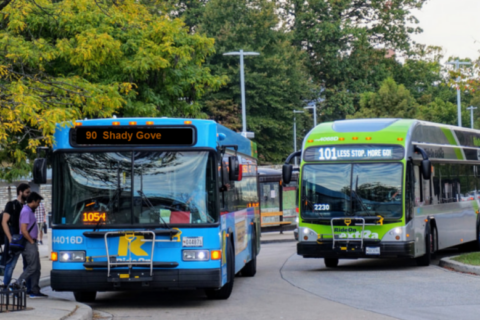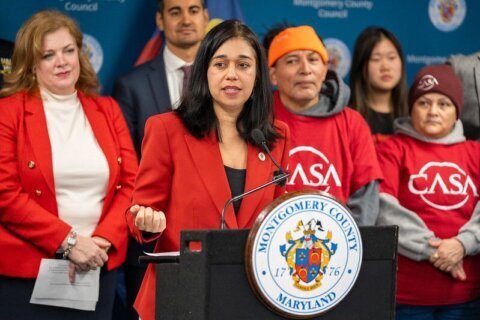A controversial plan to bring smoother commutes between Virginia and Maryland by adding toll lanes to parts of the Capital Beltway and Interstate 270 may not bring a big improvement to traffic flow during one busy travel period.
Computer models predicting driving speeds in 2045 from the George Washington Parkway to I-270 West Spur on the Inner Loop during the afternoon rush found that cars in the general travel lanes will only move at a snail’s pace, an average of 7 mph, regardless of whether the toll project is built.
It also found the average travel speed for drivers who choose to pay to take the toll lanes would be 23 mph, despite promises from some transportation officials of 45 mph speeds on the HOT lanes.
The projections for the state’s updated draft environmental impact statement were developed using computer modeling. The update is required by the federal government after the decision to not continue toll lanes from I-270 into Prince George’s County.
The state said lack of improvement during the afternoon commute would be due in part to congestion on the top side of the Capital Beltway and I-270, which fall outside of the toll lane project.
In an email, Terry Owens, spokesperson for the Maryland Department of Transportation office that is overseeing the public-private partnership project, said building the toll lanes is needed to address one major choke point for traffic, the American Legion Bridge. The project would widen the Maryland to Virginia crossing. He said other improvements, outside of the toll lane project, would be necessary to address other areas, including another choke point, which is Georgia Avenue.
“Traffic today backs up from Georgia Avenue to Connecticut Avenue on the top side of the Beltway. As traffic grows over the next 24 years, independent of the traffic relief we provided on the American Legion Bridge and I-270, this backup will extend even further beyond the I-270 west spur,” Owens wrote.
Some of those improvements, Owens said, may include ramp metering, extending and/or connecting entrance and exit lanes, and dynamic signing to communicate alternative travel routes to drivers.
When it came to the speeds on the toll lanes during the afternoon hours, Owens said federal law does not require toll operators to maintain a 45-mph speed, and that the predicted 23-mph speed is only for the 4 to 5 p.m. hour, if no improvements are done outside of the project.
The study showed minimal improvement for driving from the Capital Beltway to Interstate 370 in Rockville, with the addition of the toll lanes improving the drive by 1 mph.
For people headed into Virginia during the evening rush hour, the Outer Loop is predicted to have a 15-mph boost from I-270 to the GW Parkway on the free lanes, but most other stretches of road calculated only gained 1 to 4 additional miles per hour with the HOT lanes in place.
For the morning rush hour, for the same stretch of road, there was a considerable improvement in speeds on the Outer Loop, with an increase in the average speed from 33 to 52 mph. HOT lanes travelers are expected to go at an average of 56 mph during their morning commute.
The plan has been an important one for Gov. Larry Hogan but has received pushback from some in the communities who would be affected by the project.
Other changes in the project include adjustments to completely avoid the Morningstar Cemetery, the site of dozens of African American grave sites in the Cabin John area. The state said the new plan also reduced the impact on Plummers Island, which has served as a wildlife research site for the Washington Biologists Field Club.
The state will hold public hearings on the updated study, on Monday, Nov. 1. The two call-in testimony hearing sessions will be held from 2 to 4 p.m. and 6 to 8 p.m. Registration for speakers can be done at the project’s website or by calling 833-858-5960.








